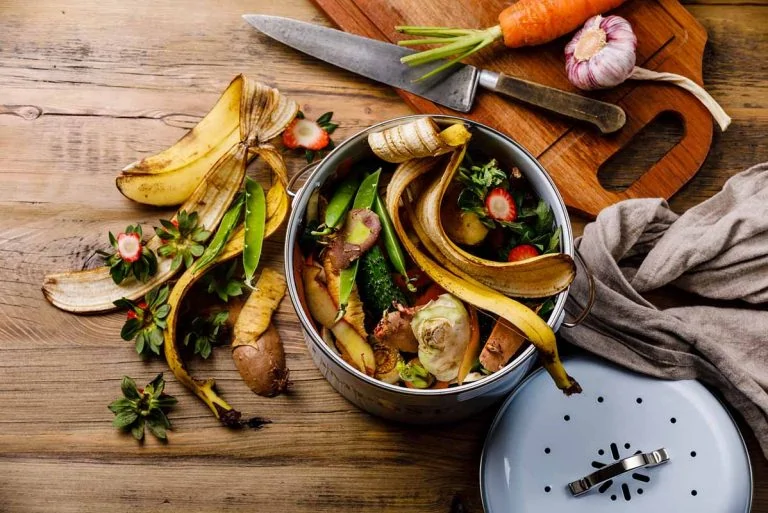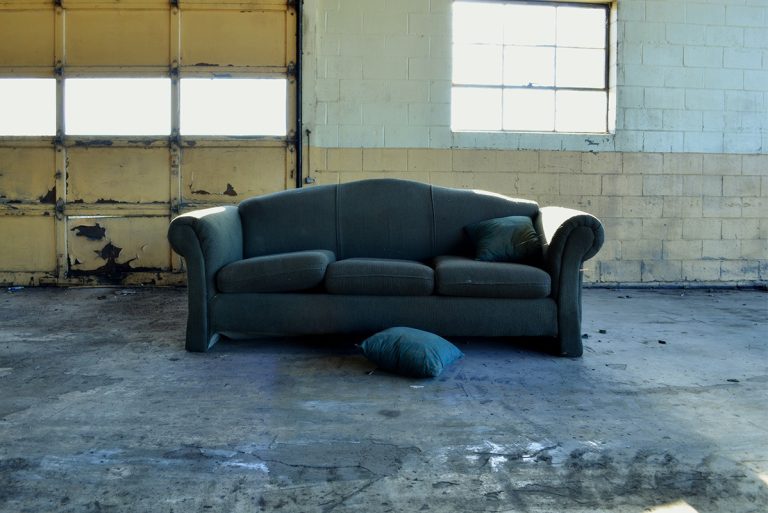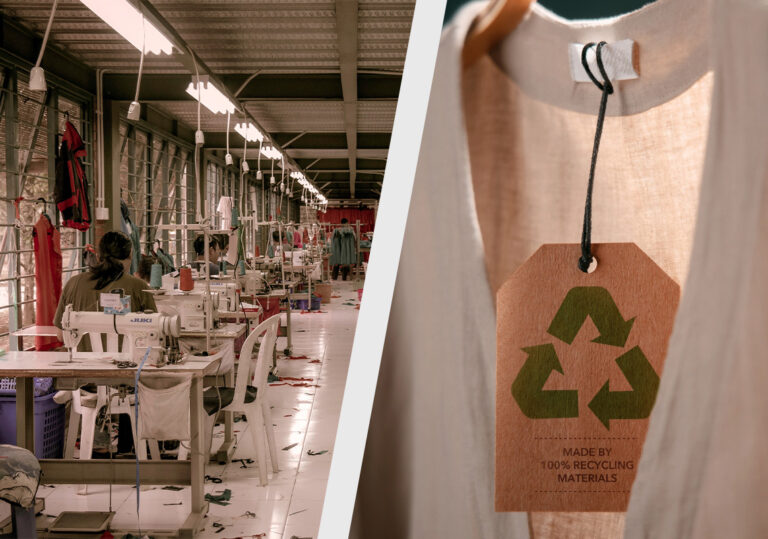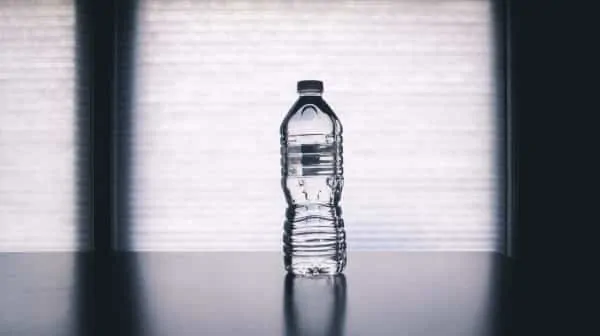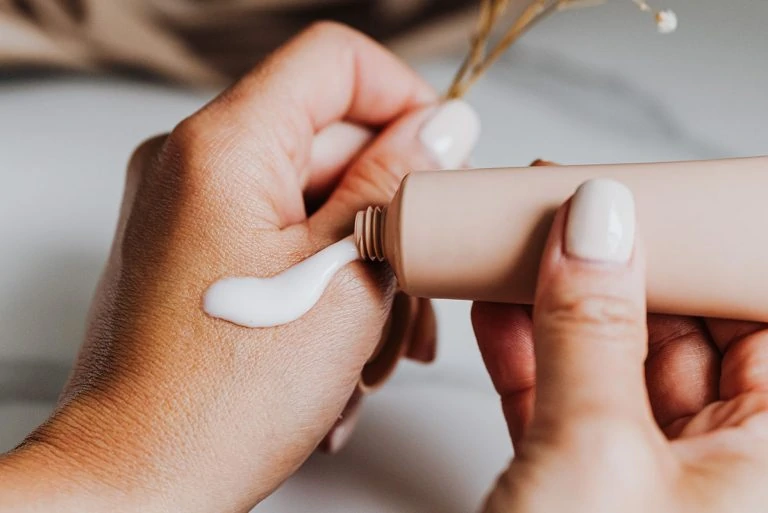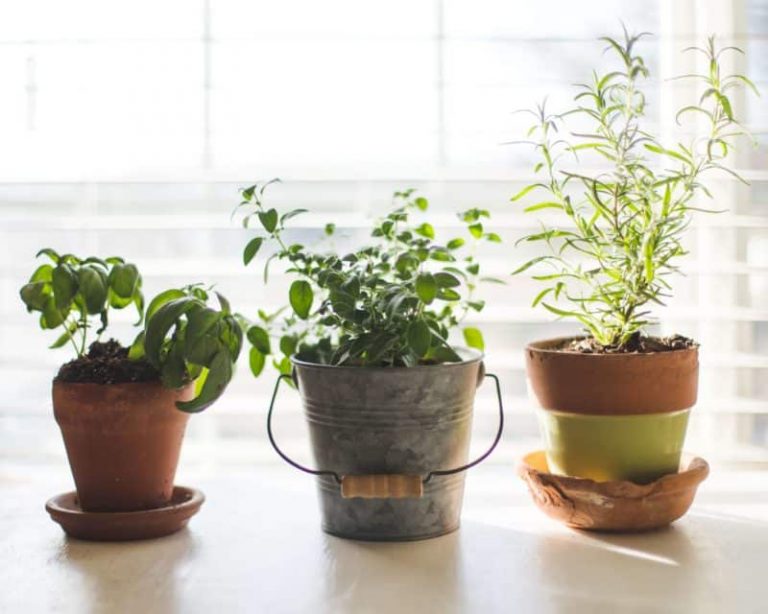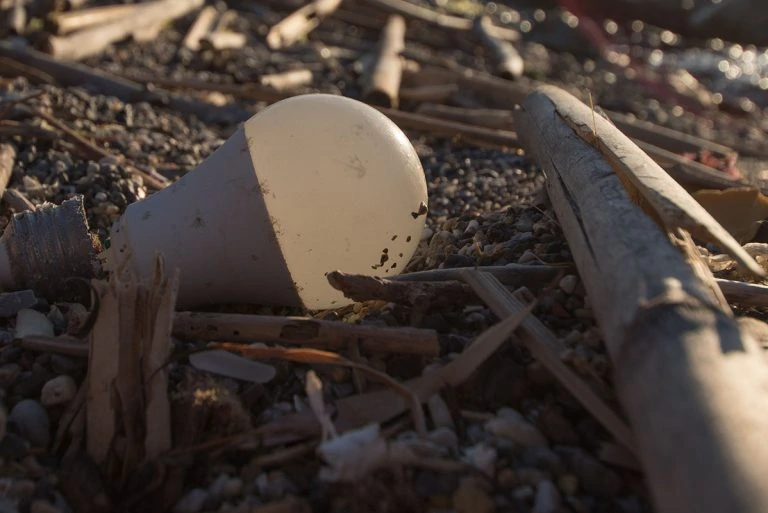Around one-third of all the food produced ends up being wasted. Individually, we waste around 95-115 kg of food in Europe and North America. Home composting is a way to turn that garbage into garden gold!
You can recycle your food waste, reduce landfill size, and enrich your soil with beneficial organisms and nutrients. You don’t even need an outdoor space!
In a rush? Our favorite indoor compost bin for most people is the SCD Probiotics All Seasons Bokashi Indoor Countertop Composter.
To learn how an indoor composting bin could turn you scraps into great compost, read on.
Best indoor compost bins: our top picks
Our picks for the best indoor compost bins cover a range of models, from traditional composting bins to countertop models and even a powered food waste recycler.
1. SCD Probiotics All Seasons Bokashi Indoor Countertop Composter
Bokashi is a particular type of anaerobic composting. Unlike aerobic composting, you can fill a bokashi bin with almost any kitchen waste, including meat and dairy products. Your food waste is mixed with inoculated bran, squashed into the compost bin, and covered with another layer of the bran.
The airtight lid then stops air from getting to this mixture for around ten to twelve days. During that time, the ‘leachate’ will need to be drawn off every second day. Handily, this particular model has a spigot at the bottom of the bin for precisely this.
The bokashi process essentially ferments the kitchen waste, which renders it highly acidic. In order to complete the process, you’ll need to bury it in a fallow spot in the garden and wait around two weeks.
The SCD bokashi bin has dimensions of 12 x 12 x 18 inches and a five-gallon capacity, making it compact enough for countertop use. It comes with the inoculated bran bokashi mixture needed to get you started.
Since bokashi is an anaerobic composting method, the lid is airtight, so you don’t have to worry about any unpleasant smells.
What we like:
- Greater composting options – The bokashi process can make use of otherwise non-compostable materials like meat, dairy products, bones, and coffee grounds.
- Easy leachate emptying – The spigot on the bottom makes emptying the leachate (which can be watered down and used as fertilizer) very easy.
- Space saver – The compact size makes it ideal for smaller apartments.
What we don’t like:
- Only one step in the process – The end product still needs to be dug into the ground for two weeks before use.
If you want to start composting nearly all of your food waste in your kitchen, but don’t want a sizable smelly compost bin where you cook, the SCD bokashi bin is a great alternative. Just remember that you need to drain it, and the resultant mixture can’t be used straight away.
2. Utopia Kitchen Countertop Compost Bin
One of the main issues with conducting aerobic composting in your home is the smell. The Utopia kitchen countertop compost bin deals with those smells by including two activated carbon filters.
Activated carbon absorbs and traps volatile organic compounds (bad smells), meaning your kitchen doesn’t have to smell like a midden. The bin itself is 14 x 8 x 9 inches with a capacity of 4.9 liters, small enough to be left on a countertop or tucked into a cupboard.
The entire bin is made of high-quality stainless steel to give it extra durability and corrosion resistance. The filters fit neatly into the top of the tight-fitting lid and are reusable. All you have to do is soak them in warm soapy water and then rinse thoroughly.
What we like:
- Solid construction – The stainless steel construction makes this a very sturdy little bin.
- Odour remover – The activated carbon filters are a great way to deal with the smell of composting food.
- Compact – It’s genuinely small and light enough for countertop use.
What we don’t like:
- Limited capacity – As you might expect from a countertop model, this bin doesn’t have the largest capacity.
If you want an aerobic composting bin with a compact footprint and minimal to zero earthy aromas, this diminutive carbon-filtered option is a winner.
3. Urban Worm Bag Worm Composting Bin
Worm bag systems take advantage of what is called vermicomposting. The basics are, you fill the bag with food waste, shredded paper, or cardboard, and then add a composting worm. The worms eat the scraps and poop out ‘worm castings,’ which make excellent fertilizer.
The Urban Worm Bag composting bin is simple and easy to construct. With dimensions of 26.75 x 26.75 x 31.75 inches, it’s small enough that it won’t dominate a room. It’s made of breathable 900D oxford fabric, and the worm castings are accessible through a simple zip.
What we like:
- Greater composting options – The worms can handle most food waste, as well as paper, cardboard, and even some yard waste.
- Easy setup – The worm bag itself is easy and straightforward to assemble.
- Easy to store – The relatively compact footprint makes it easy to store.
What we don’t like:
- Not just any worms – You need to buy specific composting worms for it, you can’t just dig them out of the garden
- Added costs – Composting worms are not inexpensive, which adds to the cost of your vermicomposting setup.
Vermicomposting is a deceptively simple method of indoor composting. Add the worms and the scraps and let them do their work. As long as your happy to share your living space with a colony of adorably named ‘red wigglers,’ it makes a great indoor composting option.
4. Elever Stainless Steel Compost Bin
One of the less sustainable elements of home composting is the use of plastic compost bags to line the bin. The Elever stainless steel compost bin gets around this by including a removable plastic interior. The outer material is durable stainless steel.
In order to tackle flies and odors, this compost bin comes with an activated carbon filter and fruit fly trap. These cover the air vents, so your compost gets aerated, but you don’t have to deal with the smell.
At 7.5 by 5.2 inches and a capacity of 4.5 liters, this is a smaller composting bin, and the removable inner will come in handy when it needs to be emptied regularly.
What we like:
- Carbon filtered – The twin carbon filters deal with both smells and flies.
- No added waste – The removable plastic inner means no more plastic composting bags.
- No rusting – The outer is made of corrosion-resistant stainless steel.
What we don’t like:
- Replacements needed – The carbon filters aren’t reusable and will need to be replaced every six months.
The Elever stainless steel compost bin is simple and solidly made. If you’re looking for durability and no bells and whistles, this could be the bin for you.
5. Chef’n EcoCrock Counter Compost Bin
The Chef’n EcoCrock counter compost bin is an excellent combination of style and function. The removable plastic inner bucket makes filling and emptying the bin easy. It’s also dishwasher safe for easy cleanup.
The ceramic outer is durable and easy to clean. Smells are kept contained in the bin by two carbon filters mounted in the top of the lid.
At 3.3 liters, the EcoCrock is one of the smaller bins on this list. However, the diminutive size coupled with its sleek and modern design makes it an attractive addition to your kitchen. If there’s any downside to this bin, it’s the fact that the plastic lid isn’t quite the same quality as the rest of it.
What we like:
- Well designed – The EcoCrock has a sleek and elegant design.
- Durable – The durable outer layer is made of solid ceramic.
- Carbon filtered – Carbon filtration helps to deal with any of the smells.
What we don’t like:
- Out of place – The cheap-looking plastic lid doesn’t fit the rest of the design.
If you’ve got a particular look for your kitchen and you don’t want an industrial-looking compost bin to ruin that, the Chef’n EcoCrock is both functional and elegant at the same time.
6. Innotak Indoor Countertop Composter
If you’ve recently become interested in indoor composting and you want to buy a starter kit, then Innotak Indoor Countertop Composter comes with everything you need.
The bin itself has a 6-liter capacity and dimensions of 9.5 x 9.3 x 9.3 inches, meaning it can hold a fair amount of kitchen waste. It’s also made of durable 304 stainless steel with premium powder coating. The lid of the bin has an activated charcoal filter in it to keep it from getting smelly.
Alongside the bin, you’ll also get 50 biodegradable bags with rubber bands to fix them in place, six charcoal filters, a guide to composting, and a list of compostable materials.
What we like:
- Ready to go – The bin comes with everything you need to get composting.
- Comes in different sizes –There’s also a 5-liter version if you want something a little smaller.
- Easy to clean – The powder-coated finish makes it easier to clean.
What we don’t like:
- Added waste – A removable plastic insert would have been preferable to bags.
The Innotak indoor countertop composter makes a great starter kit for someone who’s just starting out their indoor composting journey. It comes with everything you need.
7. OXO Good Grips Easy-Clean Compost Bin
The OXO Good Grips compost bin is an excellent budget starter bin for you to begin your composting journey with. It comes in 2.8-liter and 3.7-liter models and features a smooth, featureless interior liner to stop compost or liquids from getting stuck inside.
Interestingly, there are no air holes in this design. Instead, the bin lid sits flush with the top but doesn’t seal. This lets enough air in to slow the growth of bacteria and mold.
What we like:
- Different size options – The OXO bin comes in two different sizes to suit your space needs.
- Easy to clean – The seamless inner liner makes it easier to clean.
What we don’t like:
- No filtration options – The lack of venting holes means there’s no option for a carbon filter.
This is a very basic no-frills budget composting bin. But it’s solidly made, easy to clean, and gets the job done.
8. Bamboozle Bamboo Food Composter
Since composting is an eco-friendly activity, it makes sense to have an eco-friendly composting bin. With dimensions of 8 x 6.25 x 9 inches and a capacity of 3.2 liters, this bin is made of biodegradable bamboo fiber.
In order to keep smells in check, the bamboo lid comes with two activated carbon filters in it. Best of all, when you’re done with composting, the entire bin can be put in the dishwasher along with the carbon filters.
What we like:
- Eco-friendly construction – An elegant design coupled with an ecologically friendly biodegradable bamboo fiber construction.
- Washable filters – The carbon filters control the smell and are dishwasher safe.
What we don’t like:
- Poor handle construction – A lot of reviewers have complained that the handle isn’t as sturdy as it could be.
Elegant, easy to wash, and ecologically friendly, the Bamboozle bamboo food composter is a great choice for someone conscious of both interior design and their carbon footprint.
9. Vitamix FoodCycler FC-50
The Vitamix FoodCycler is a bit of a wild card on this list. Rather than a traditional composting bin, the FoodCycler uses heat and a grinder to process food waste down to about 10% of its original volume.
This ground-up food waste can then be used as fertilizer, added to a worm bag, or put in a traditional composting bin. The small 2-liter capacity is offset by the fact how much it reduces the volume of waste by and its 4-8 hour processing time.
The process of grinding up the food waste is quiet, and the filtered carbon system removed any of the smells. Once it’s done, all you have to do is empty the removable lidded waste bucket. Once that is emptied, it can go straight into the dishwasher.
The FoodCycler is also remarkably compact, taking up just one cubic foot of space.
What we like:
- Grind it down – The food cycler makes short work of bones and eggshells.
- Quick and quiet – The grinding process is quick, quiet, and odor-free.
- Easy to clean – The interior bucket is dishwasher safe.
What we don’t like:
- Not a composter – It doesn’t actually compost anything, so you’ll need a traditional compost bin to go with it. It does, however, streamline the whole composting process.
If you want to make your composting process as streamlined and odor-free as possible, then adding in the Vitamix FoodCycler means you can compost more waste at a time. It also makes short work of traditionally hard to compost items, like bones and shells.
Indoor compost bins: a buyer’s guide
Now that you’ve seen our list of some of the best indoor composting bins on the market check out our guide to picking the best one for you.
How is indoor composting different from outdoor?
The processes behind indoor composting are mostly the same as outdoor composting. You mix air, brown matter, green matter, and water in your composting bin. This creates the right mixture of nitrogen, protein, carbon, bacteria, and ventilation for decomposition to occur.
There are actually several benefits to composting indoors.
- Firstly, not everyone has the space for an external compost bin or heap. If you live in an apartment or house without a garden, outdoor composting just isn’t an option. However, most people have enough space in even the smallest living area for a 1-2 liter indoor composting bin.
- Secondly, the indoor environment is more conducive to organic composting than doing it outdoors. Composting works best when the temperature range is between 40 and 80 degrees.
- When outdoors, compost heaps also have to be protected from direct sunlight, heavy rainfall, low temperatures, and snowfall. Composting indoors helps you keep a more consistent environment, which helps promote decomposition.
- Depending on where you live, the conditions outside might not allow for the survival of colonies of composting worms. This means indoor composting is your only option if you want to try out vermicomposting.
What makes a good indoor compost bin?
Before buying an indoor composting bin, there are a couple of things you should consider, including:
Odor control
Theoretically, well managed composting should be a low odor, emitting only a light earthy smell. However, organic decay is not a partially exact science, and not everyone likes a faint earthy smell.
If you’re sensitive to smells or want to put things like meat or dairy products in your compost, which do smell, you’ll want to look at odor control options. The most common of these are activated carbon filters. These trap organic particles and significantly cut down on the smell.
Ideally, you’ll want to go for dishwasher safe, reusable carbon filters to get the most amount of use out of them.
Vermicomposting vs. aerobic composting
Most indoor composting is done via aerobic composting. However, there are other options. Vermicomposting uses colonies of specific worms to break down food waste. The process is faster than aerobic composting, is low-odor, and the food scraps don’t need to be regularly turned.
Of course, the downside is that you have to share your house with a colony of worms, which some people just aren’t prepared to do.
Another option is Bokashi or anaerobic composting. This involves sealing food waste in with inoculated bran and drawing off the resulting leachate every couple of days. The benefits of Bokashi are that there is no odor because the bin is sealed, and the leachate makes an excellent fertilizer.
The downside is that what the Bokashi process produces is a highly acidic ‘pre-compost’ that needs to be buried in the ground for two weeks before it can be used.
What kind of composting process you use is going to depend on your personal circumstances.
Size
The size of your composting bin is going to be dedicated by where you plan to store it. Thankfully, there is a full range of sizes to choose from. Many models on our list are designed explicitly for countertop use.
This also makes them small enough to store in a small cupboard.
Features
When it comes to indoor composting bins, there are a couple of key features to look out for:
- A removable inner liner: You don’t want emptying your indoor compost bin to be a hassle. Having a removable inner liner makes it easier to get the compost out of the container. Ideally, you’ll also want that inner liner to be dishwasher safe, so it’s as easy to clean as possible.
- A corrosion-resistant outer shell: composting involves water and a certain amount of naturally occurring acid. The last thing you want is an outer layer to your bin that is susceptible to rust. Ceramic and stainless steel are the best materials to choose from.
- Proper ventilation: aerobic composting and vermicomposting need air to work, which is why most composting bins have holes in the top. You’ll want to make sure the container you buy has a fair amount of airflow to keep odor-causing bacteria and mold from growing.
Wrapping up
Indoor composting doesn’t have to be a messy, smelly business. You can banish those odors with the right bin and turn your food waste into garden gold.
With our buyer’s guide, you’ll know exactly what to look for in an indoor composting bin, and we’ve also done the legwork to find you some of the best containers on the market.
Do you have any tips for indoor composting? Is there a bin that you love and think should have made our list? We’d love to hear from you in the comments section below.
